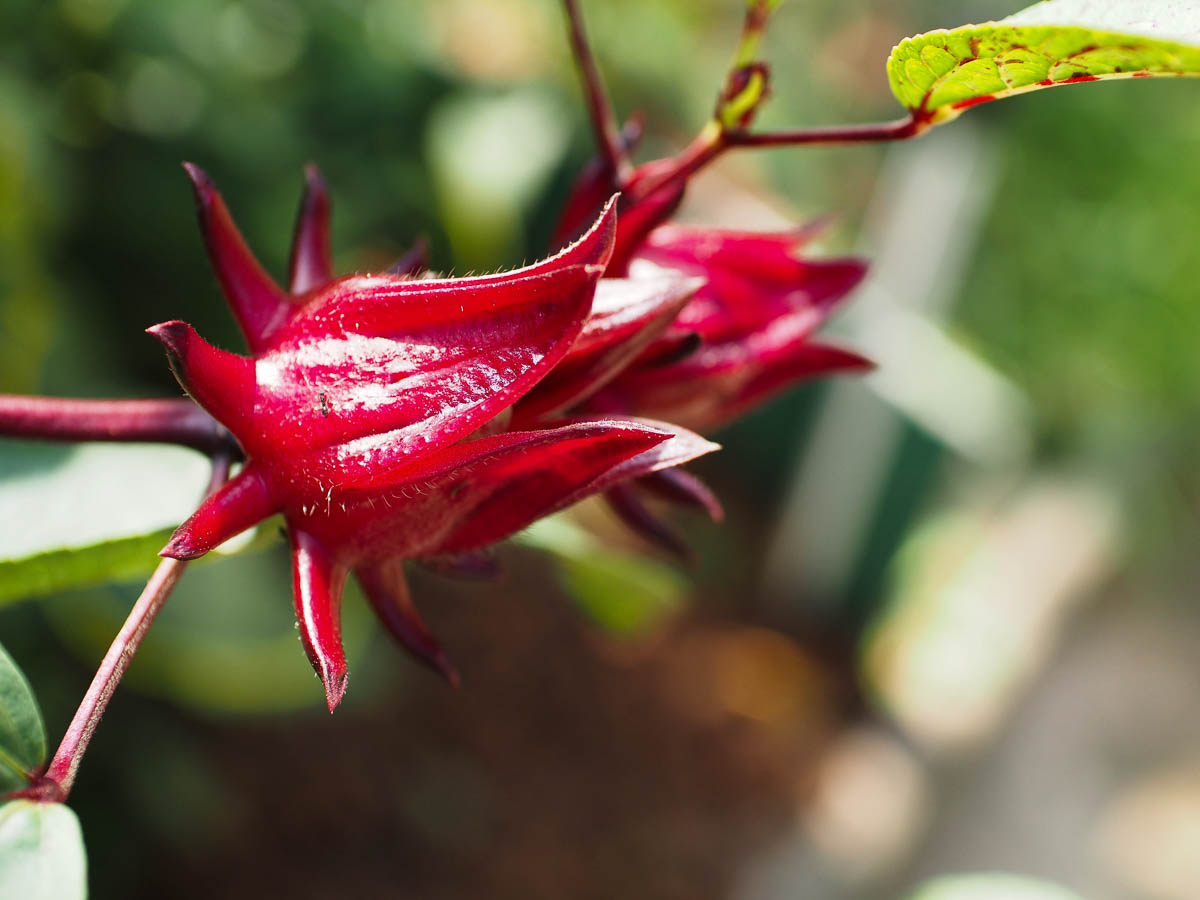Roselle
Roselle (Hibiscus sabdariffa)
Other common names: Jamaica Sorrel, Red Sorrel, Sorrel, Indian Sorrel, Asam Susar, 玫瑰茄, 山茄子
.jpg)
Roselles are a popular fruiting shrub that produces a striking red calyx that is edible. The calyx refers to the sepals surrounding the hard and inedible seed pod, and can be made into drinks, jams, or dried for direct consumption. The young shoots are also edible and can be added to salads and soups.
As large and woody perennial bush, this plant is a staple in edible gardens.
This plant is part of the Malvaceae or Hibiscus family, which includes other edible plants like Lady’s-Finger, and ornamental plants like Turk's Turban.
Sun and soil needs:

This plant does best in full sun gardens with a minimum of 6 hours of sunlight. It can also grow in gardens with more than 4 hours of direct sunlight or at least 6 hours of indirect sunlight, but its growth will be slower, and it may not fruit as much.
Plants do best in pots with loamy soil at least 15cm deep, or in true ground. These plants are vulnerable to root rot, so ensure that your pots drain well, and that your soil has plenty of organic matter to let the roots breathe.
Sowing seeds:
Sow seeds individually in a seedling tray filled with potting mix or seedling mix. Lightly mist the soil until damp, once a day. Seeds should sprout within 2 weeks.
The seedlings will be vulnerable to high heat and heavy rain. It is best to kept them in a sheltered propagation area or a shaded space with around 4 hours of partial or direct sunlight.
Seeds can be sown directly into pots or the ground around 15-30cm apart. Lightly water the soil until damp, once a day. Seeds should sprout within 10 days.
Transplanting:
Seedlings will be ready for transplanting into pots or true ground when they have developed 4 or more leaves, or roughly a week or two after germination. Leave 15-30cm between each plant to encourage more growth and better ventilation.
Growing:
Roselles will produce more flowers and thus more fruit when fed with fertilisers high in phosphorus and potassium, and more leaves when fed with fertilisers high in nitrogen. To encourage both leaves and flowers, the plants can be fed with balanced fertilisers. Plants can be fertilised regularly once a month after transplanting for a fuller crop.
It is a good practice to prune regularly and remove dead leaves and stems to improve ventilation and allow light to reach more of the plant. Regular pruning also decreases the likelihood of pests quickly taking over the plant.
This plant can grow more than 2m tall, but for the ease of harvesting it can be pruned to a manageable hight of around 1m and continue to fruit. Taller plants can be staked for additioonal support and prevent the stem from snapping.
Harvesting:
Plants can be harvested for leaves at any time. Plants will start to flower around 3 months after sowing. The calyx can be harvested once it becomes waxy and fleshy, usually around a week after the flower blooms. Harvest the entire fruit with a sharp cutting tool, and peel the edible calyx from around the hard, inedible seed pod.
Seed pods can be left on the plant to mature. Seeds are ready for harvest and planting when the seed pod is brown and dry.
Harvest cycle:
| Growing period | Sowing to germination | Germination to transplanting | Transplanting to first harvest | Total sowing to first harvest |
|---|---|---|---|---|
| Approximate time | Less than 2 weeks | 1 to 2 weeks | 1 to 3 months | 2 to 4 months |
Check out our sowing and harvest planner to schedule your growing!
Propagation:
Roselles can be grown from seeds or via stem cuttings rooted in soil.
Common problems & solutions:
If your plant has few to no flowers, you can try fertilising the plant with fertilisers high in phosphorus and potassium. These nutrients encourage root and flower growth.
Aphids, Mealy Bugs, Whiteflies, and Spider Mites often infest the plant if it has underlying problems like repeated wilting from heat stress. Mechanical pest control methods like pruning the infested parts are the best methods for managing these pests in the short term, but resolving the underlying problem will prevent them in the long term.
The plant is susceptible to root rot if grown in waterlogged soil. To prevent rot, grow the plant in sandy soil with plenty of inorganic soil amendments.
Wilting leaves during hot weather is a sign of heat stress. Increase the number of times the plant is watered daily, and apply mulch at the base to prevent water loss.

